Grab a cuppa and have a read.....
Staffordshire Wildlife Trust has commissioned a number of publications, which can be downloaded below.
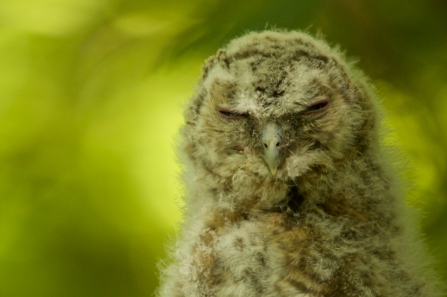
Credit: Tom Hibbert
State of Staffordshire's Nature Report
In 2016, together with Staffordshire Ecological Record we published the first “stocktake” of species and habitats found across the county. Marrying data and expertise from dozens of individuals and organisations, the report provided an update on how wildlife was faring across the county in the hope that action will be taken to improve conditions. You can read more about the report here.
State of Staffordshire's Nature Report (Compact Version)
State of Staffordshire's Nature Report (Technical Version)
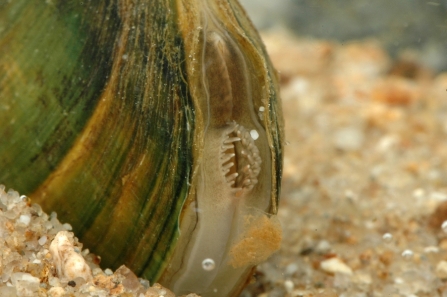
Joseph Hlasek
The Depressed River Mussel
The depressed (or compressed) river mussel Pseudanadonta complanata is a UK Biodiversity Action Plan (BAP) species and is associated with large floodplain rivers and canals. Evidence so far points to a major reduction in the range and status of this species in Staffordshire and the UK as a whole. River mussels are keystone species which, as filter feeders, are crucial for the health of our watercourses and waterways.
The Depressed River Mussel
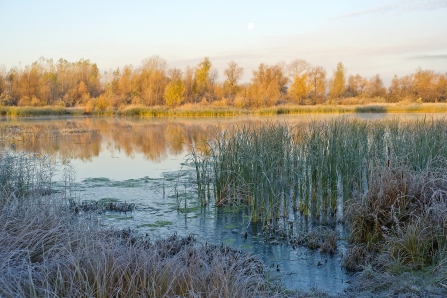
Farming floodplains for the future
Farming Floodplains for the Future was an important national pilot project. Its aim was to understand, through delivery, how the farmed landscape can be viably managed in ways that reduce flood risk downstream, whilst enhancing the natural environment. A partnership project hosted by Staffordshire Wildlife Trust, it was funded by Defra through its Flood and Coastal Erosion Risk Management Innovation Fund.
Farming Floodplains for the Future documents (click to download)
Case Study 1 - Church House Farm
Case Study 2 - Little Horsley
Case Study 3 - Old Hattons
Case Study 4 - Fieldhouse Farm - Dingle
Case Study 5 - Izaak Walton
Case Study 6 - Bellfields
Case Study 7 - Deepmore
Case Study 8 - Fieldhouse Farm - Woodland
Case Study 9 - IDB
Final Report
Issue Study 1 - Date & Modelling
Issue Study 2 - Monitoring
Issue Study 3 - argi-env
Issue Study 4 - Long term
Toolkit 1 - Targeting and establishing a project
Toolkit 2 - Delivery
Farming floodplains for the futre
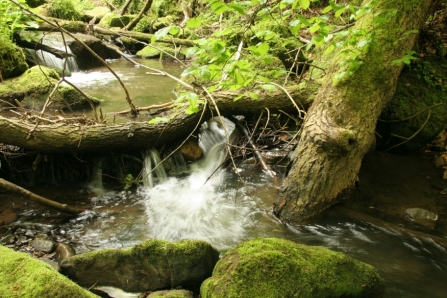
Credit: Nick Mott
Headwater Streams
Headwater streams are easily overlooked. However, these secretive watercourses, and the springs, flushes and seepage wetlands that feed them, are extremely important for a range of specially adapted species. The Trust has been continuing its study of these fascinating habitats through its Headwaters project. Funding for this work has been provided by the Esmée Fairbairn Foundation.
Headwater streams
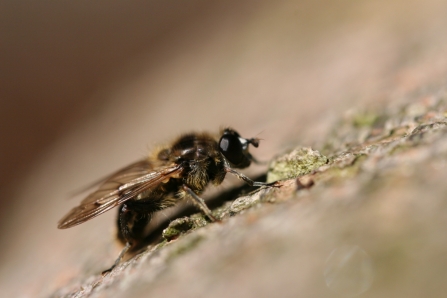
Credit: Nick Mott
Logjammer hoverfly
Staffordshire Wildlife Trust has undertaken an in-depth study of a Nationally Scarce, Red Data Book hoverfly species called Chalcosyrphus eunotus. This superb animal has been fondly nicknamed the 'logjammer hoverfly', due to its habit of perching on log jams and woody debris in stream channels. The study has looked into the species' close association with saturated coarse woody debris in clean woodland streams. New light has been shed on the larval ecology, mating habits and behaviour of C eunotus. The study is continuing via Staffordshire Wildlife Trust's Headwater Streams Project with funding from the Esmee Fairbairn Foundation and HDH Wills Charitable Trust.
Chalcosyrphus eunotus report
Chalcosyrphus eunotus report - appendix
Chalcosyrphus eunotus – Year 2
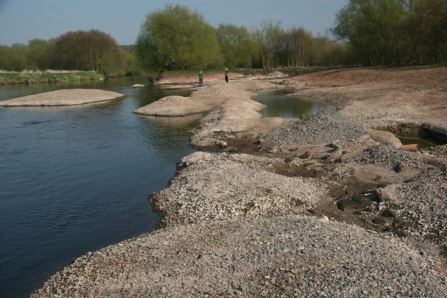
Credit: Nick Mott
River braiding
The Trust's Croxall Lakes nature reserve was previously a Redland (now Lafarge Aggregates) sand and gravel quarry until the late 1980s. The restoration was dominated by a large, deep, rectangular sailing lake. Approximately 30 per cent of the site was infilled with pulverished fuel ash from Drakelow Power Station. The National Forest Company purchased the site as a new nature reserve in 2000 and then sold the majority of the holding to Staffordshire Wildlife Trust. Just one other river widening or “braiding” project has been carried out in the UK.
River Braiding and Reedbed Creation, Cropxall Lakes, Staffordshire,
Geomorphological Assessment of channel widening downstream of the confluence of the River Trent and the River Tame,
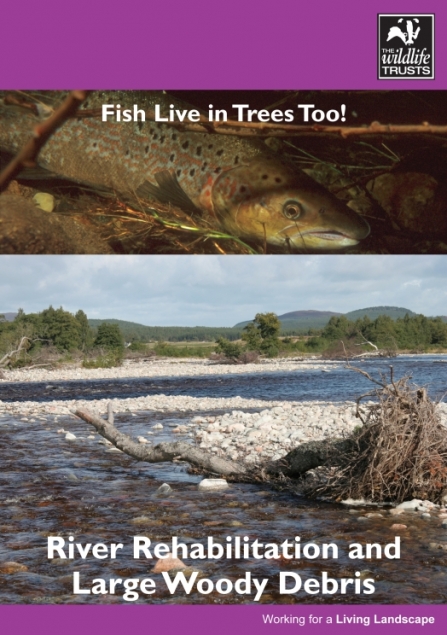
Credit: Nick Mott. Survey of regularly dredged section of Upper Penk at Perton
River rehabilitation and Large Woody Debris
River management is entering a new phase; one where natural processes such as erosion and deposition are left unchecked; one where rivers and streams are provided with space to choose their own pathways and channel shapes. Large Woody Debris (LWD) has an important role to play in helping to speed up these processes.
Fish Live in Trees Too: River Rehabilitation and Large Woody Debris

Credit: Nick Mott
River restoration
In October 2012 a river rehabilitation scheme was completed on the Trent at the Catton Hall estate near Croxall. River islands and side bars were created using live willow trees and a series of features including shoals, riffles, chutes, backwaters and pools through the introduction of two thousand cubic metres of gravels.
Funding for this exciting work was provided by Defra to assist with targets within the EU Water Framework Directive. The project was supported by the Central Rivers Initiative and its partners.
We aim to use the scheme as a further demonstration site to inspire other organisations, landowners, managers and mineral companies to undertake similar work at appropriate locations elsewhere in the UK. Ongoing monitoring is being carried out by the University of Salford, Central Rivers and Trust staff. Results will be measured against baseline surveys carried out prior to the works.
River Trent at the Catton Hall Estate - Hydromorphic Audit and Appraisal, JBA Project Manager Seb Bentley
Saffordshire Flora
This is the first fully documented Flora for Staffordshire, and is an essential reference for everyone interested in the natural history of Staffordshire, including professional ecologists, land managers, amateur naturalists, botanists and students.
Full details: The Flora of Staffordshire, by John E. Hawksford & Ian J. Hopkins, with David Cadman, Roger N. Hill, Sue Lawley, Andrew Leak, Elaine Radford, John R. Reynolds and Don Steward
Published by Staffordshire Wildlife Trust
A4 hardcover | Over 400 pages including 100 colour
ISBN 978-0-9549385-2-9
PRICE £45 (plus £8.50 P&P unless purchased from the Wolseley Centre)
Contains:
• beautifully illustrated colour section covering the major habitats, geology and climate
• data analysis
• separate colour map overlay for key features.
• 2600 taxa are covered in written accounts
• over 1000 taxa with 2 x 2 km square (tetrad) distribution maps
• comprehensive history of botanical recording in Staffordshire
• covers vice-county 39, including all the administrative county plus part of the Black Country and part of Wyre Forest
Staffordshire Flora - update no 1
Updated thematic map
Updated boundary map
New overlay
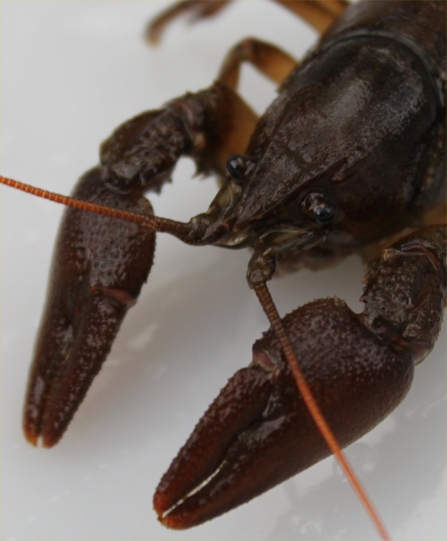
White-clawed crayfish
ust one crayfish species is native to the British Isles and Ireland: the white-clawed crayfish.
The name ‘crayfish’ is thought to derive from the Old French word for ‘crevice’. This is apt as these fascinating creatures hide in various nooks and crannies during the day and then come out to forage at night. Its menu is unfussy: it will eat pretty much whatever it can get its claws into including dead fish, insects, plants, detritus and one another. It therefore has an important role to play in cleaning up our freshwater environments. Its presence is generally a good indication of a healthy and balanced wetland habitat.
Prior to the 1970s the white-clawed crayfish was common and widely distributed across much of England, Wales, Ireland and Europe. Since then the population has suffered a catastrophic decline. There is now genuine concern over its future.
For more information on white-clawed crayfish and advice on how to help stop the spread of crayfish plague, download the publication below
White-clawed crayfish
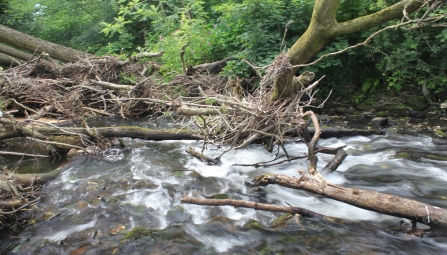
Credit: Nick Mott
Managing woody debris in rivers, streams and floodplains
This booklet aims to promote best practice to farmers, riparian landowners, site managers, drainage boards, anglers, foresters, local authorities, highways engineers, water policy makers, teachers, students and the general public.
Branches, large limbs, root boles or entire trees that have fallen into rivers are commonly referred to as Large Woody Debris (LWD). Accumulations of smaller branches, twigs and leaf litter are known as Coarse Woody Debris (CWD).
Woody debris is a vital component of our watercourses and its removal can severely degrade their health. The positive ecological contribution of LWD has often been overlooked or downplayed, while impacts on water flow and erosion have been misunderstood or exaggerated. This booklet seeks to dispel some of the myths and summarise the latest thinking.
Managing woody debris in rivers, streams and floodplains
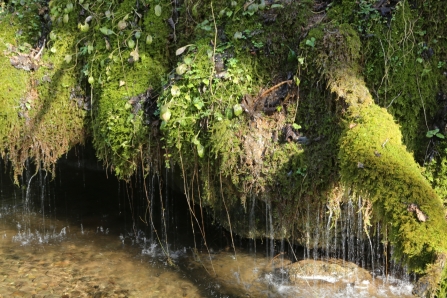
Tufa Petrifying Springs' Research
Under the right conditions, limescale can form outdoors around springs and streams. In hard water areas, where groundwater rich in calcium bicarbonate comes to the surface and comes into contact with the air, carbon dioxide is lost from the water and a hard deposit of calcium carbonate (tufa) is formed.
Tufa petrifying springs are genuinely rare features in Staffordshire. We have a couple of celebrities of our
own including Trickle Ridge in the Churnet Valley and the Petrifactions near Stone, both of which are embedded in local folklore. The Trust has identified just twelve other tufa sites around the county, with the main clusters in the limestone areas of the Weaver Hills and the Manifold Valley. But of course the main reason we are interested in these features is their wildlife value. They are treasure troves for wildlife adapted to highly specialised conditions, especially mosses, ferns and a range of invertebrate species such as Soldierflies, craneflies and rove beetles.
A small-scale research project was set up in 2018 to begin to evaluate these sites. It involves a study of the groundwater chemistry, geology, vegetation and invertebrates at each site. The results are being used to help secure the ongoing protection of these magical, but extremely vulnerable, sites. Any threats identified can be remedied through management agreements with the landowners.
The other main aim of the project is to raise awareness of the wonders of tufa and to locate any further springs hiding out there in the wider landscape. If a spring is tufa-forming, you’ll often find swelling yellowy-orange mats of the mosses Palustriella commutata and Cratoneuron filicinum growing around
them. If you know of any springs that you think might be tufa springs, please get in touch.
The Trust would like to thank The Mackintosh Foundation and The Linley Shaw Foundation for funding for the Tufa research in 2017-19.
We would also like to thank: Conops Entomology, British Geological Society, Fenland Botanical Surveys and all the landowners and managers who engaged with the project.
The project involved the publication of 2 reports;
Report 1: Staffordshire Tufa Surveys Focusing on the Acalyptrate Diptera, 2019. Conops Entomology 2020.
Report 2: Survey of selected tufa forming sites in Staffordshire, UK Gareth Farr1, Jonathan Graham2, Andy Marriott1 & Elliott Hamilton1. 2019. Survey of selected tufa forming sites in Staffordshire, UK. British Geological Survey Internal Report, OR/19/054.
1 British Geological Survey
2 Fenland Botanical Surveys
